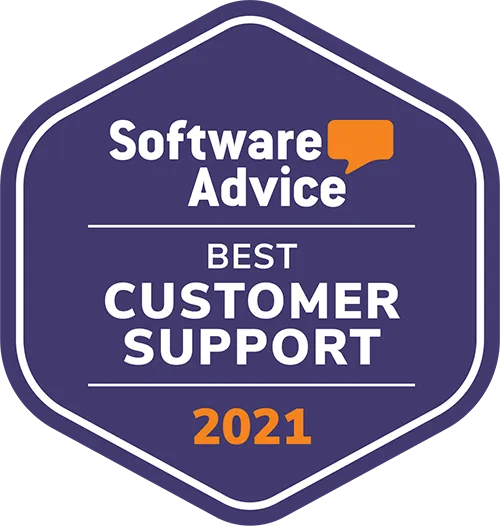It wasn’t a hard choice to select SmartSurvey. Not only did they understand what we were looking to achieve right from the start, they presented a solution that represented everything we needed.
Customer Engagement Surveys
Customer Engagement Surveys

Introduction to customer engagement surveys
The key to any successful business is keeping customers engaged, as highly engaged customers are likely to buy more, help promote and demonstrate greater loyalty towards your company.
While employing customer surveys can provide a general insight into how your customers are feeling, particularly whether they are happy or not, if you’re to measure their deeper emotional connection with your business you need to carry out a customer engagement survey.
Engagement is now an integral part of the customer journey, as businesses look to attract, engage and drive more consumers to take positive actions with them.
Customer engagement survey software
Providing a high-quality customer experience is an important component in your customer engagement strategy. However, to measure this, you need to be capturing and analysing data from every customer touchpoint, so you can better understand which interactions are increasing and which are hurting your engagement.
Fortunately, with the emergence of customer engagement software and with the right APIs and integrations in place, you’ll have the tools to measure this important metric.
From reviewing the analytics of web content, to examining the volume of customer referrals, interactions on live/web chat box applications or positive feedback left by customers on user review and social media sites, customer engagement measurement tools can be a lot more complex and wide-ranging than with many other customer survey approaches. So, we will discuss these in a bit more detail in our Customer Engagement Measurement section further down the page.

Customer engagement measurement
So how do we measure customer engagement? When it comes to evaluating the success of your customer engagement program, it’s important to have a kpi to measure customer engagement strategy in place. For customer engagement there are a wide range of tools and metrics you can draw on. Some good ones to get you started include:
1. Customer referral programs
If you’ve developed a customer referral program and have been actively promoting it through blogs, newsletter, emails and other CTAs, knowing how to measure customer engagement, so you can see how successful your initiative has been is extremely important. You can measure this in four ways:
Metric one: participation rate (advocates): this looks to identify the number of people you’ve reached with the program, who have also signed up to tell others about your brand.
Metric two: share rate (advocates): the share rate can reveal how many of your advocates sent referrals after joining your program and how many times they shared it.
Metric three: impressions/reach (friends): this metric looks to identify how many of your advocates friends have seen the information about your program – through social media news feeds and emails.
Metric four: response/conversion rate: this metric aims to identify how many friends have acted on the referral by signing up for your product.
2. Analytics of website content
How to measure customer engagement online is equally important. Through website analytics you could track which customers were most regularly returning to your site, spending the most time and consuming the most of certain types of content. You then use this information to nurture these relationships with strategically placed pop-up surveys and CTAs, and further analyse these interactions to measure how many of these converted into enquiries and sales.
3. Tracking of social media interactions
Some more metrics to measure customer engagement include the tracking of social media interactions such as liking, sharing and commenting on content across platforms such as Twitter, Facebook, LinkedIn, Pinterest and Instagram. This is fairly easy to do given the built-in dashboards and analysis tools that are available with social media platforms.
4. Examining the volume and feedback from user review websites
Feedback from online user review sites can also be valuable for customer engagement measurement. In addition to leaving a rating score, customers typically leave feedback, both good and bad, which provides invaluable feedback into what you’re doing well and what you could be doing better. There are even some online tools available, which can help you to keep track of these comments and monitor their sentiment.
Customer engagement questions
Need inspiration? See our list of customer engagement survey questions. Split across 5 distinct areas of engagement - interactions, usage, satisfaction, perceptions/motivations, and product/service improvements - you're sure to find ideas for your next survey.
How are we different?
UK based
Your data will be stored and processed here in the UK for your peace of mind.
Fanatical support
We pride ourselves on going above and beyond for our customers, providing expert advice and support whenever you need it.
You're in safe hands
Our secure platform and robust data protection measures ensure your data is safe and secure with us. We are ISO27001 and Cyber Essentials Plus certified.
We're human
We understand the importance of personal interaction, which is why we offer a human touch alongside our cutting-edge technology.
Accessibility matters
We're committed to making our surveys accessible to everyone, with a range of features to support those with disabilities.
Unlimited responses
With no limits on the number of responses you can collect, you can be sure your survey will reach as many people as possible without it being cost prohibitive.

Don’t just take our word for it
Over 500,000 users have registered to use SmartSurvey.


We couldn't be happier with SmartSurvey, we love its functionality and flexibility. This means we have been able to use one survey tool across many parts of the business.








Get in touch
We are ISO27001 certified, registered under the Data Protection Act and fully compliant with EU Privacy Laws.
Access to a knowledgeable account manager for personal assistance for when you most need it.
Our friendly design team is on hand to assist with any bespoke design and custom development requests.
We succeed if you succeed. Our goal is to help you carry out effective research and we’re here to help you achieve that.
